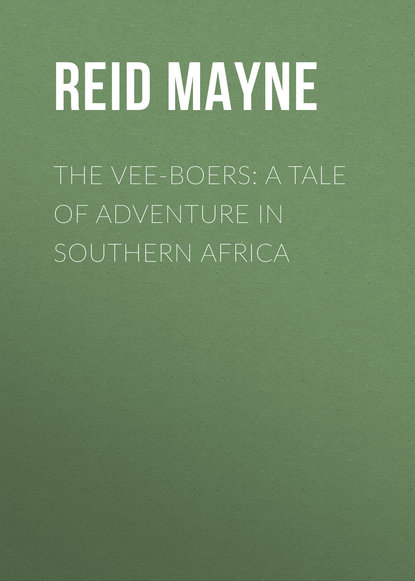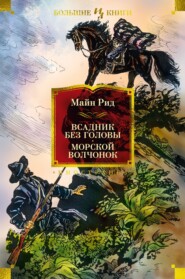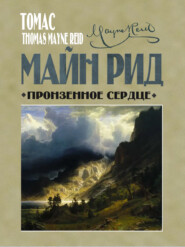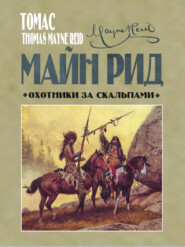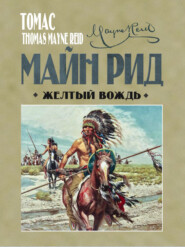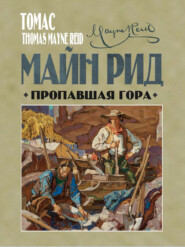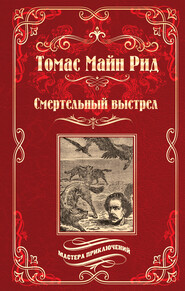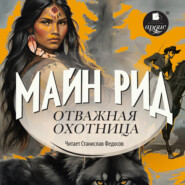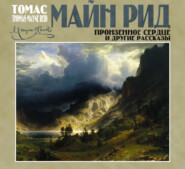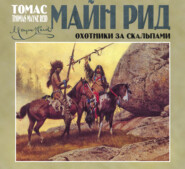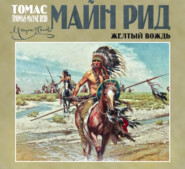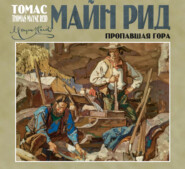По всем вопросам обращайтесь на: info@litportal.ru
(©) 2003-2024.
✖
The Vee-Boers: A Tale of Adventure in Southern Africa
Настройки чтения
Размер шрифта
Высота строк
Поля
Thus, day after day, was slaughter made among the zeekoes, as the rafters went on down the river. Not wanton slaughter; but in pursuance of that scheme of economy the head baas had got into his head, now known, and approved of by his associates. How could they help approval, as they looked on a pile of hippopotamus teeth that lay on the raft’s deck, every hour growing bigger, each fresh pair added being as so much money put into their pockets?
All this was satisfactory enough, but nothing to what awaited them farther down. As they drew near the coast, they came upon an islet lying centrally in mid-stream, at a place where the river was more than a mile in width. They sighted it just before sunset; and, knowing the night would be moonless and pitch dark, it was determined to bring-to at the islet, and remain by it till morning. So the raft’s head was set for it, without much change of course, as they had been already bearing nearly straight down upon it. When near, they saw it was selvedged with tall reeds, of the kind called palmit, which, standing in the water, formed a belt all round it, interrupted only at the upper end, where an open list led into the firm dry land. It was a sort of natural canal, no doubt due to the water being there too deep for the palmits to get root. It was just wide enough to admit the raft; and without further ado this was run into it, and “docked.”
By this it was too dark for them to make out what lay beyond the immediate proximity of their moorings, though the staging-plank was run out, and some landed to ramble about a bit. When morning came, it was seen that the islet had an area of some eight or ten acres, all grass-covered; and, strange to say, the grass all withered, though but a foot or two above the level of the river’s water. Its brown colour strikingly contrasted with the vivid green of the palmits forming its periphery; and suggested a gorgeous picture-frame, from which the work of the artist had been removed, leaving nought behind but the rough backing of boards. Neither tree nor bush grew upon it; their absence indicating that it was subject to annual submergence in the season of rain.
To all this, however, the rafters scarce gave a thought. Nor would they have bestowed a second glance on it, but for what they saw on the water outside; this, an array of zeekoes, in such numbers that the surface was literally flecked with them! They were all around the islet, and over the river, far as the verge of vision – certainly hundreds of them. The spectacle recalled the vast assemblage of elephants encountered higher up; only that the great band of pachyderms were but visitors to the place where they had been seen, while these of the water seemed either to be permanent residents around the islet, or made it a sort of rendezvous.
Here, then, was a grand opportunity for the Vee-Boers to complete the scheme already in progress; in short, almost a certainty of making their fortunes. Nor did they hesitate about the steps that should be taken to profit by it. Instead, it was at once resolved to remain upon the islet, till the ultimate moment when the rainy season might be expected to commence, or the last zeekoe in that quarter be killed.
With like promptness did they enter upon execution. Ere the setting of another sun, the three waggon-tilts were again seen serving as tents, set up in the centre and highest part of the islet – with two hartebeest-houses, constructed of the palmit reeds beside them – while the naked-bodied burden-bearers streamed to and fro between raft and camp-ground, as the links of an endless chain.
Chapter Twenty Four.
To Sea and Home
Let the reader imagine a month to have elapsed since our migrant graziers – for the time turned hippopotamus hunters – pitched their camp on the river islet. They are still in occupation of it; and proof that they have chased the zeekoes to some purpose is seen all around. Under a capacious shed, some hundreds of the animals’ teeth lie in heaps, as horns in a tannery, and beside them many bunches of jamboks, manufactured from the hides; while piles of Zeekoe-speck[45 - The thick layer of fat immediately under the skin of the hippopotamus is esteemed a delicacy by the Boers, who call it, when salted and cured, Zeekoe-speck, or bacon. The jelly made from the feet is also much prized, while the best kind of whips (jamboks) are those of hippopotamus hide. As is well-known, the teeth furnish an ivory of the finest quality.] and bladders of fat rendered into lard, are heaped up everywhere. During all the month they have had a busy time of it; the young hunters killing hippopotami, while the Hottentots and Caffres did the skinning, whip-making, curing, and “trying out.”
Tempted by a chase so profitable in results, and still yielding, they had lingered till the last moment it might be safe. Perhaps too long, was the apprehensive thought of Jan Van Dorn, as one morning he waked up to behold the sky overcast with inky clouds, at the same time hearing the rumble of distant thunder. It was the very morning they had fixed upon for breaking up camp, and moving everything on board the raft. But as yet nothing had been stirred; waggon-tilts, hartebeest-houses, sheds – with all the paraphernalia – standing or piled up as ever.
Neither was hand laid upon them that day, nor on the five days following. For before breakfast could be eaten, the far-off thunder had come near, and was no longer heard in low muttering, but loud reverberation; peal succeeding peal, as if all heaven’s artillery had opened fire over their heads. Lightning flashed and forked athwart the clouded firmament, from which fell rain, not in drops, but sheets – a very swill of it.
Five days, and part of a sixth, did the downpour continue without intermission, save in the nights. But these being dark as Erebus, nothing could be done in the way of transferring effects to the raft; while during daylight so thick and blinding was the rain, that to keep under shelter was the only thing thought of.
On the morning of the seventh day, the sky cleared again, and there was a suspension of the storm. But Jan Van Dorn and Smutz knew it would be only temporary; since now, sure enough, the dreadful periodical rains had set in. So much the more reason for hastening departure from that perilous spot.
As yet, however, their only fear was the fatal malarious fever, likely to ensue. But ere twenty minutes more had passed, they were made aware of another danger hitherto unthought of. Preliminary to moving their impedimenta on board the raft, the three baases had gone down to inspect it, with a view to the storage of the cargo, now so much augmented. Never was visit of inspection shorter, or more perfunctory, nor one with more abrupt ending. In fact they could not get upon the raft at all, as the inner end of the plank, that had rested on dry land, was now several yards out in the water – bobbing up and down like a float-stick. There was no obscurity about the cause. The river had risen several feet; and, as they stood regarding it, they could see it was still on the rise. In another hour or two – possibly less – the whole islet would be under water.
Whatever the reason for haste before, it was now more than doubled. And, needless to say, all possible haste was made; a scene of activity following, with hurrying to and fro. Down came the waggon covers – canvass, bamboos and all – to be rushed on board the raft, and there dropped without waiting to set them up again; goods and chattels, all the old effects with the new, getting transferred from camp to craft in like expeditious manner.
Everything was on board by noon; and, as luckily no rain fell during the rest of that day, they had all stowed snug before night, and were ready to resume navigation; their last spell of it on that bottom of koker-booms – so hoped they, and believed.
By earliest dawn of the next day the raft was cast loose from moorings, and rowed out into the river clear of the islet. Then went it floating down, though with deck nearer the water-line than ever before. But this, instead of troubling those on board, only gave them gratification; as might be gathered from the words of Jan Van Dorn, spoken after they had got well under way. Seated beside his two associates on sheaves of jamboks, all three pipe in mouth, and eyes bent on the heaps of ivory, zeekoe-speck, and lard, the head baas thus unburdened himself: —
“After all, brothers, it’s not likely to turn out so bad for us. Look at these!” with a nod towards the varied spoils. “If we can only get them safe into the Durban market, they’ll sell for enough to make good all our losses. Ay,” he added, with a knowing wink, and a circular flourish of his meerschaum, “with a trifle of profit besides; sufficient to give us all a fresh start, and a good one, once we’ve treked back to the Transvaal.”
“Ya – ya!” was the laconic response of Blom and Rynwald; after which the three sate smoking on in silence; only now and then interchanging grunts of congratulation, as their eyes rested on the valuable commodities heaped up around them.
It is pleasant having to record, that their hopeful anticipations were realised, and to the letter. On the third day after putting off from the islet, the raft was tossing about in tidal water, where the river’s current met the inflowing surge of the sea. And here again the koker-booms behaved splendidly, bearing them well up and safe through the conflict of waters – at length to lie cabled to a staunchion on the wharf of the little seaport they had heard of, and which proved to be in existence.
Nor did fortune forsake them there. Instead, favoured them in their finding a vessel at anchor in the port – a coast-trader bound down for Natal. Overjoyed was her skipper to take them on board; so many passengers, who could well pay the passage-money, to say nothing of the large amount of freight, giving him a full cargo. It was just as if they had chartered his vessel beforehand, and he had been awaiting them.
In fine, the wanderers by land and water got safe back to their point of departure in the Transvaal, richer than they had ever been before. Nor did they leave it again, having no longer cause for expatriation. For soon after their return, ensued that strife usually called the “Transvaal Rebellion,” but by the Transvaalians themselves, the “War of Independence.”
How they won it at Laing’s Nek, and the Spitz-kop, is well-known; and among those who took part in that fierce, sanguinary fight, none bore them more gallantly, or did greater execution with their long guns, than the young Vee-Boers, whose travels and adventures are herein recorded.
The End
notes
1
The “cameel-doorn,” literally, camel-thorn, is a species of acacia, whose tender shoots and leaves are the favourite food of the cameleopard, or giraffe. It is a common and characteristic tree in most districts of southern Africa, having pinnate leaves, and, like most of the acacia tribe, bright yellow blossoms.
2
“Vee-boers” are distinguished from other Boers by their special employment being the grazing and raising of cattle. To this they devote themselves exclusively, as the stockmen of Australia, and the ranchmen of Western America. They have no fixed habitation, flitting about from place to place with their flocks wherever the pasture tempts them, and making house and home of their huge trek-waggons, just as the “cheap jacks” of England. They have tents also, and sometimes erect rude huts.
3
“Baas,” master. It is synonymous with the “boss” of the Southern United States, which, no doubt, was carried thither by the slave negroes who had had dealings with the Dutch of South Africa.
4
The “karoos” of Southern Africa may be compared with our moorlands, only more extended in area, and with a different sort of vegetation. Heaths of many beautiful species are among their characteristic plants, as all may know who take a pride in the keeping of hothouses.
5
Elephants often march in single file – indeed, it is their common way – the sagacity of these animals telling them they are thus less exposed to danger. Often, too, a party of hunters, especially Vee-Boers, well acquainted with the habits of the great pachyderms, will allow them to pass unmolested, to be pursued and attacked farther on. A charge of infuriated elephants on a camp might result in its wholesale destruction.
6
“Waaght-een-beetje” is the Dutch synonym for “Wait-a-bit.” The tree or bush, so quaintly designated, is another of the many species of South African acacias having spines sharp as fish-hooks and so set as to hold on whatever they have caught, requiring skill, with an expenditure of time, to get clear of them. It is the acacia detinens of the botanists.
7
The “Grapple-plant” (uncaria procumbens) is a creeper, with beautiful purple blossoms and a fruit beset with hooked spines that readily catch on to the clothes, or even the skin. It is very troublesome to the barefooted natives who may have occasion to pass over ground where it grows.
8
“Vley.” The synonym in Dutch for a lake of limited extent – a pond, or pool.
9
The “mopane” is a tree belonging to the family of “banhinias,” with pinnate leaves set point upwards, so that the sun glints down between, and scarce any shade is given by the tree, even when in full foliage.
10
“Roer.” The sort of gun in common use among the South African Dutch. It is a single barrel of great length and carry far.
11
“Leeuw.” The Boers’ name for the “king of beasts.”
12
“Outspann.” The word has a general meaning, and refers not only to detaching the animals from the vehicles, but making halt either temporarily or for the night.
13





